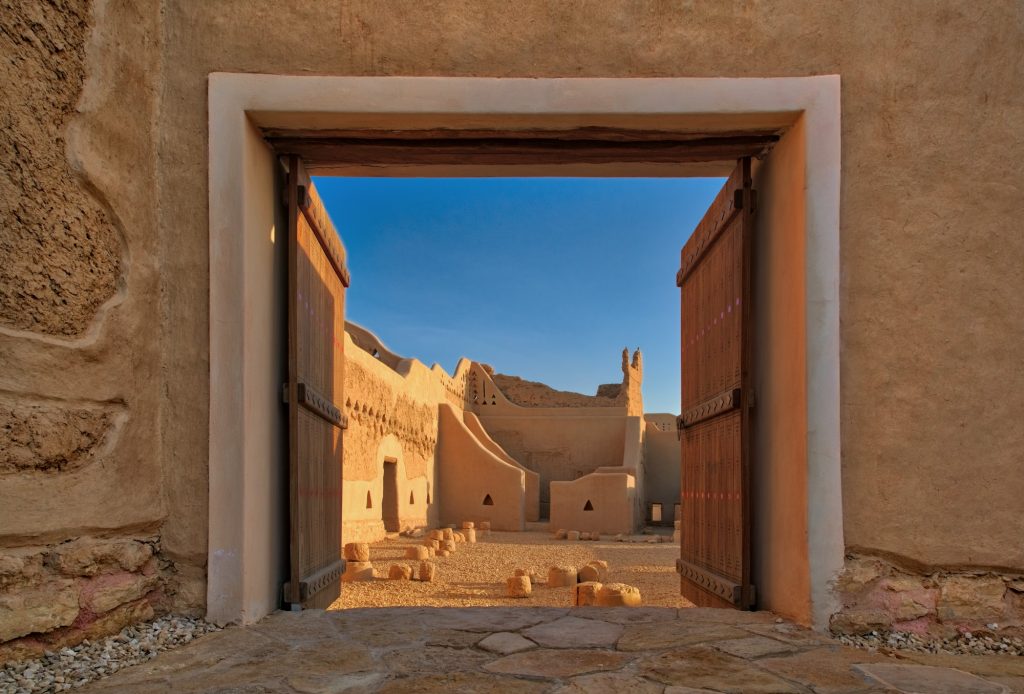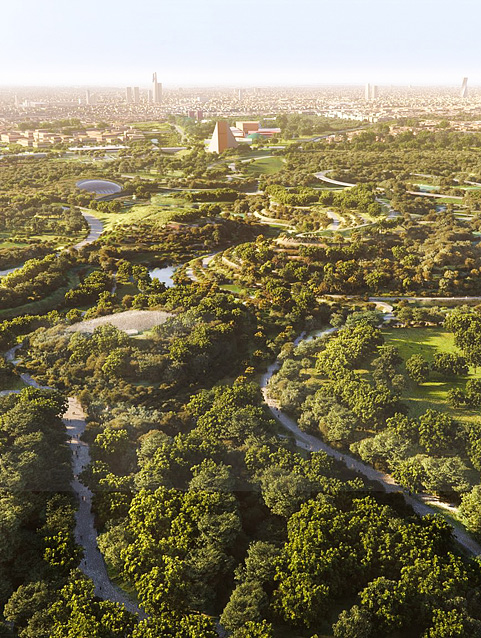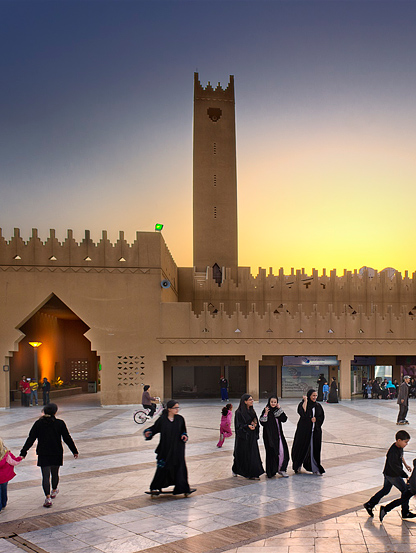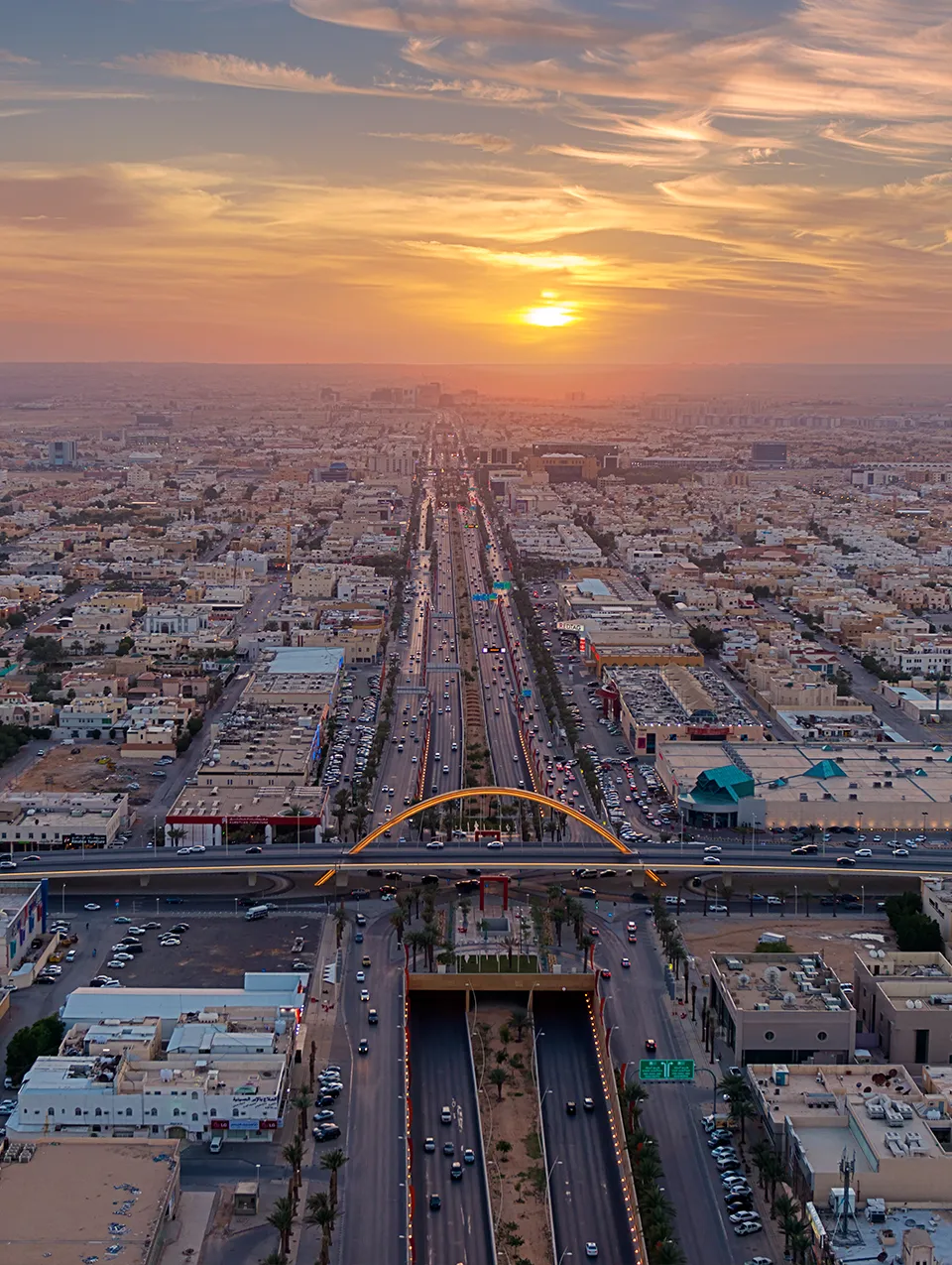HOME / PROGRAMS AND PROJECTS
Historic Addir’iyah Development Program
Addir’iyah plays a pivotal role in Saudi Arabia’s political history as the first capital of the Saudi state. Its political and advocacy role at the national level is evident in the foundations of State and the foundations of faith it laid from the very beginning. The urban ruin of Diriyah at the beginning of the 19th century left it abandoned in most of its parts.

Development Program
The Historic Addir’iyah Development Program, which is the first capital of the State of Saudi Arabia, combines the axes: urban, cultural, economic and social, with the environmental development requirements of the Wadi Hanifa and serves as a model for oasis architecture.
The program developed by the Royal Commission for Riyadh City and implemented in cooperation with the Ministry of Tourism, Diriyah Governorate and its municipality is based on the historical, political and cultural significance of Diriyah, its urban heritage and unique location on the banks of Wadi Hanifa, adopting the principle of integration with the city of Riyadh, so that Diriyah is transformed into a cultural, tourist and recreational suburb.
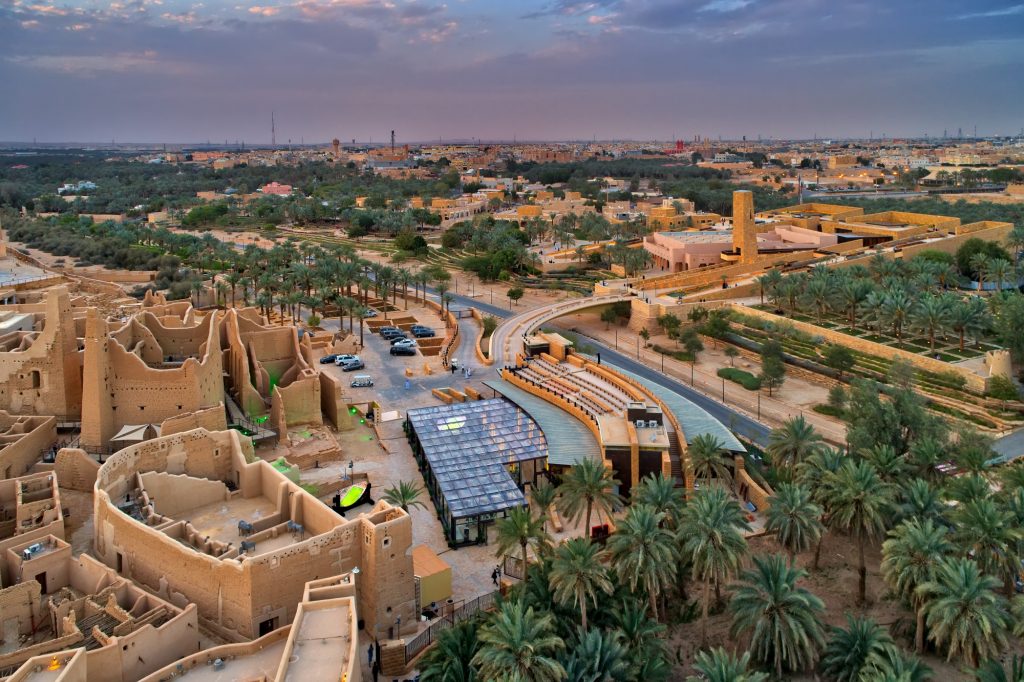
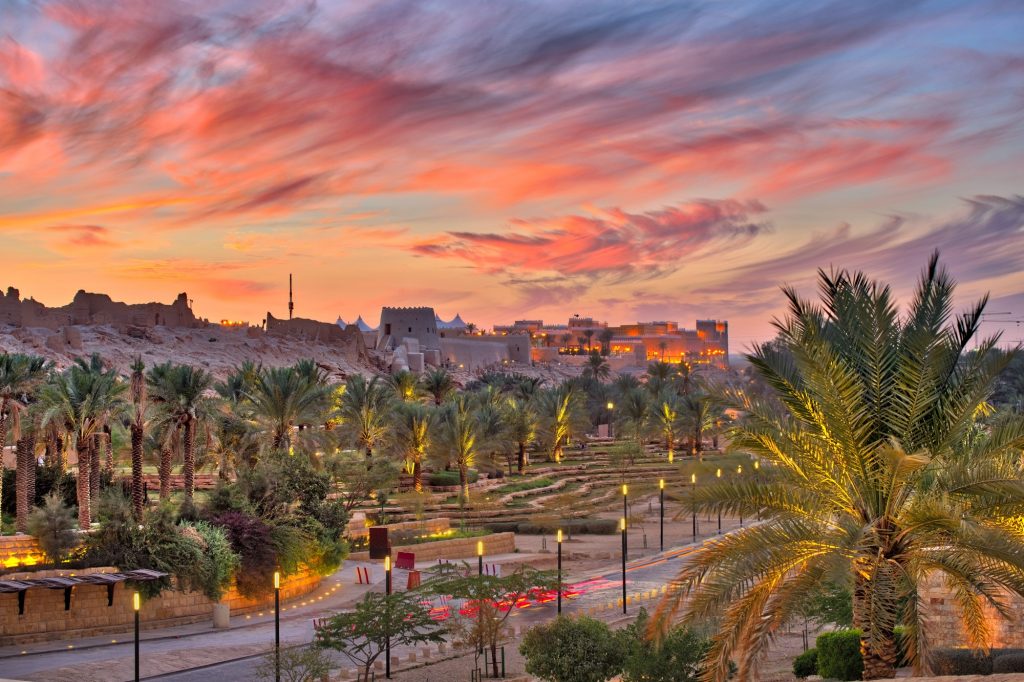
Executive Committee
In view of the national significance of historical Diriyah; a royal approval was issued on 17 Jumada al-Thani, 1419 AH, for the establishment of the Historic Addir’iyah Development Program, and the Royal Commission for Riyadh City assumed responsibility for the implementation of this program and the establishment of an executive committee for the development of Diriyah within the framework of the Commission.
Development Strategy
The Royal Commission for Riyadh developed a strategy for development in historical Diriyah, which included the following elements:
- Transforming Diriyah’s archaeological and heritage areas into a national cultural center, given its role as the nucleus of the Saudi State.
- Taking Old Diriyah districts as the hub for urban and cultural development.
- Achieving sustainable development by preserving the natural environmental determinants.
- Encouraging private investments in the development program.
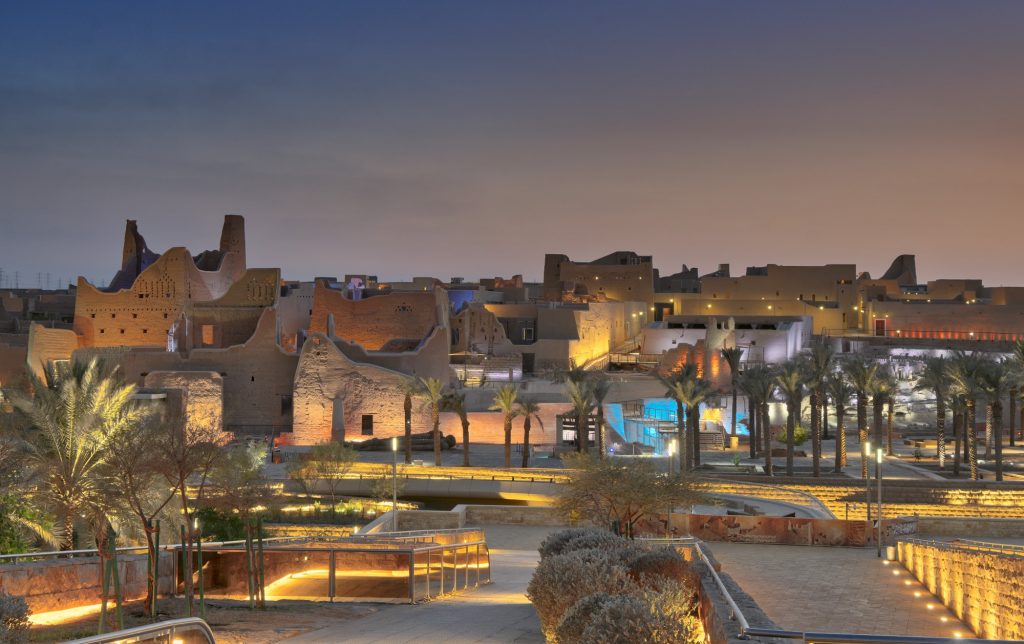
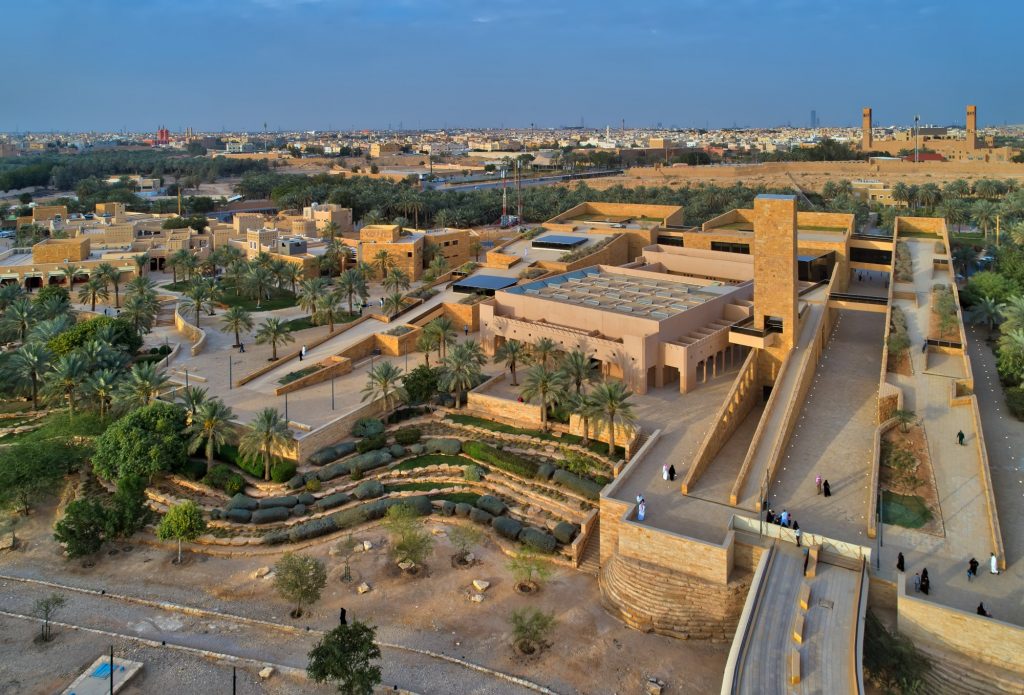
Operational Plan
The operational plan of the program was divided into three main parts:
Al-Turaif District, Al-Bujairi District, road projects and utility networks. Under the plan, the Royal Commission for Riyadh City took over the planning, implementation, operation and maintenance work, while the Ministry of Tourism operated and managed the Al Turaif District and attracted economic and tourism investments for the entire historical Diriyah.
Al Turaif District Projects
Al Turaif District is one of the most important historical monuments of Diriyah and it embraces archaeological buildings, palaces and historical landmarks that belong to the First Saudi State. The projects aimed to develop the district into an archaeological and historical museum site.
Al Turaif District development projects included the establishment of the Diriyah Museum, sound and light shows, multimedia performances at the Salwa Palace, construction of the Imam Mohammed bin Saud mosque, reception center, Sheikh Mohammed bin Abdulwahab bridge, Museum of Commerce and Finance, Museum of Social Life, War Museum, Arabic Horses Museum, Turaif Souq, Diriyah History Documentation Center and Turaif Management Center, as well as public utilities and sites arrangement.
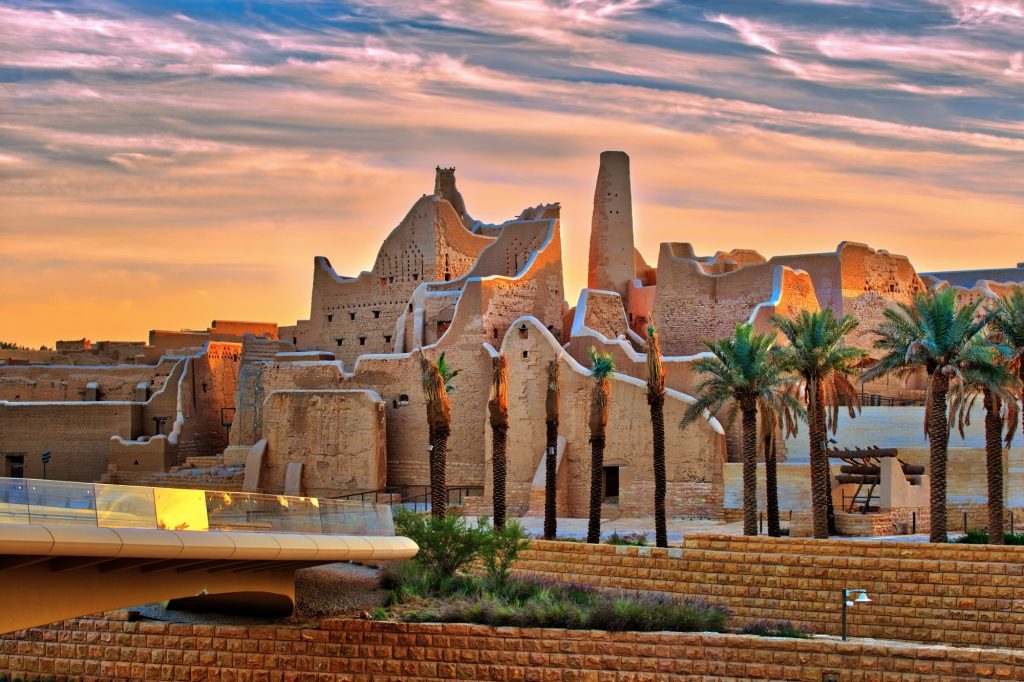
Al-Bujairi District Projects
The Al-Bujairi District projects highlighted the cultural value of the district and included: the headquarters of the Sheikh Mohammed bin Abdulwahab Mosque and Foundation, the Central District, the Main Square, the Administrative Services Office, the area overlooking Wadi Hanifa and the Al-Dhawihara Mosque, as well as roads, parking lots and public utility networks in the historic Diriyah.
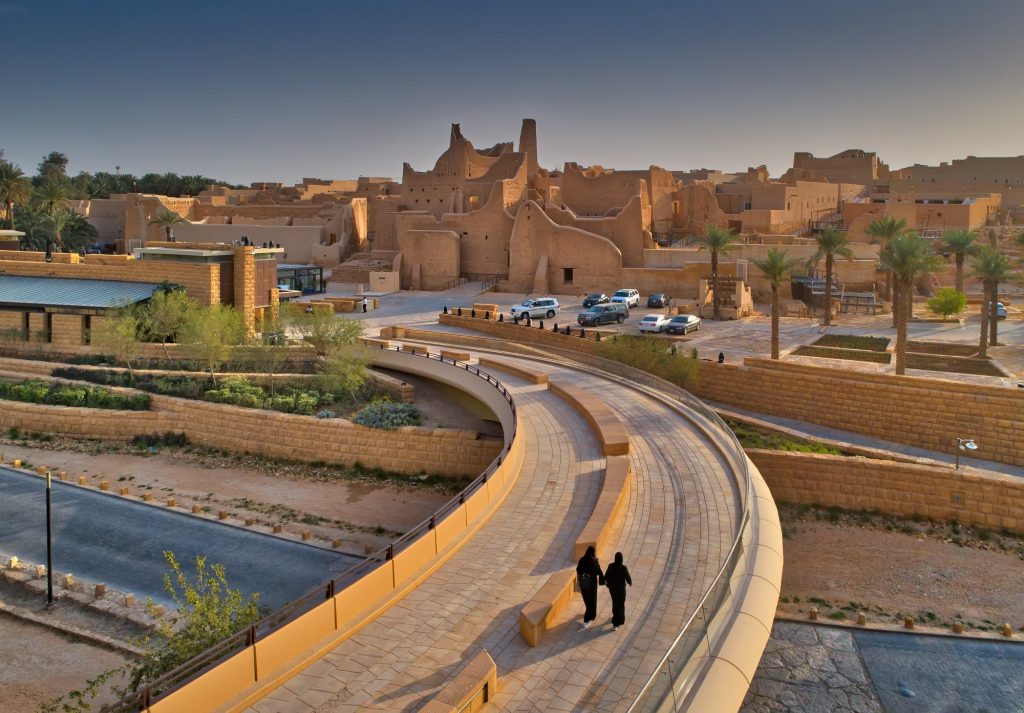
Roads, utilities, and services projects
These projects included the development of the related roads and entrances, including Imam Mohammed bin Saud Street, Imam Abdulaziz bin Mohammed Street, King Salman Square, Prince Sattam bin Abdulaziz Street, Qriwah Road and Wadi Hanifa Road within the limits of the program.
They also included the implementation of water systems, sewage, road drainage, electricity, road light systems, passages and open areas.
Diriyah on the World Heritage List
In a global recognition of the historical and heritage status of the historic city of Diriyah, the World Heritage Committee announced its approval of the registration of the Turaif District on the UNESCO World Heritage List, during the Committee’s meeting in 1431 AH.
This registration was one of the objectives of the Executive Plan for The Historic Addir’iyah Development Program developed by the Royal Commission for Riyadh City in cooperation with the Ministry of Tourism, as this step is important in supporting tourism development projects in historical Diriyah and increasing its archaeological, heritage and emotional value.
